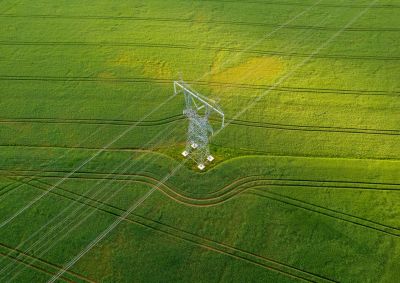The AER regulates and enforces compliance with the relevant obligations in the planning and provision of network services to customers and other market participants.
Our role in regulating system planning
Our guidelines
Access the guidelines for Cost Benefit Analysis, Best Practice Forecasting and the Regulatory Investment Test.

Public issues register
Learn how to raise an issue about the ISP or RIT and view the public issues register we maintain.

Dispute resolution
View current and historical RIT-T and RIT-D disputes and the process to follow in submitting a dispute.

Compliance activities
Access ISP transparency and compliance reports.

What is system planning?
Electricity transmission and distribution system planning identifies where network investment is needed. The most efficient solutions for those investments are selected for development.
The Australian Energy Market Commission (AEMC) is responsible for making and amending the National Electricity Rules (NER) that outline the responsibilities of the Australian Energy Market Operator (AEMO) and network service providers in system planning and investment.
AEMO completes much of this central planning through its Integrated System Plan (ISP). Network service providers plan and invest in their networks in accordance with the requirements of the NER, especially those in Chapter 5, part D, and our guidelines and instruments.
The AER develops and updates guidelines for system and network planning for both transmission and distribution projects.
- Cost Benefit Analysis (CBA) guidelines
- Forecasting Best Practice (FBP) guidelines
- Regulatory Investment Test (RIT) instruments and application guidelines
We maintain a register of compliance issues raised by stakeholders or market bodies on the ISP or RITs, which must then be addressed by the relevant party.
We also resolve disputes in relation to the processes undertaken during the ISP and RITs and carry out compliance activities around development of the ISP and application of the RIT.
We publish specific reports on transparency in the ISP as required by the NER.
We do not plan system investment nor determine the optimal development path.
We also do not approve or review the conclusions reached as a result of the cost benefit analysis conducted by either AEMO or a transmission or distribution network service provider.
The regulatory investment test is a cost benefit analysis used by transmission network service providers (RIT-T) or distribution network service providers (RIT-D) to decide between potential system investments to meet a gap or need in their network.
Our role in the RIT process is to:
• develop and publish the RIT-T and RIT-D application guidelines consistent with the NER
• engage with network service providers as needed throughout a RIT process
• resolve disputes raised following the completion of the RIT
• exercise other functions with relation to this process as outlined in clauses 5.15 - 5.17 and 5.22 - 5.23 of the NER.
The process of this test assists network service providers in choosing the investment option that meets the identified need and provides the maximum benefit to all those who produce, transport or consume electricity in the National Electricity Market, subject to considerations outlined in our guidance.
These considerations include:
- what can be included in the RIT as costs and benefits
- how to value the costs and benefits associated with a RIT
- what level of consultation is required at points of the process
- what reports are expected and when they should be published
- the expected value of a project in which certain requirements either apply or no longer apply (see RIT thresholds).
When undertaking the RIT, a network service provider must publish reports and consult on their findings with stakeholders including other companies offering alternative solutions, the local community and other interested parties like consumers, advocacy groups and the AER. This consultation allows a broader scope of ideas to be considered and allows for the best possible option to be refined and delivered.
More information on the work carried out by AEMO to develop the ISP, including determining the optimal development path, is available in the ISP and on AEMO’s website.
How the process works
Integrated System Plan (ISP)
A whole of system plan for the efficient development of the power system that achieves power system needs over at least 20 years.
| AER establishes and maintains guidelines which set out requirements for AEMO in developing the ISP. |
| AEMO defines inputs, assumptions, scenarios and network expansion options. |
| AEMO undertakes modelling to arrive at a set of actionable and future projects to augment the power system - the optimal development path. |
| AER produces transparency reports, resolves any disputes raised by interested parties, and monitors compliance with the NER and our guidelines. |

Regulatory Investment Test for Transmission (RIT-T)
An economic test to identify the project that maximises the net economic benefit in responding to an identified need.
| AER establishes and maintains guidelines which set out requirements for the Transmission Network Service Provider (TNSP) in applying the RIT-T. |
| TNSP adopts the identified need, parameters modelling and options for the project in the ISP. |
| TNSP undertakes modelling and cost benefit analysis to publish a series of reports seeking to identify the preferred option for the project. |
| TNSP carries out analysis of any material changes in circumstances prior to regulatory approval. |
| AER resolves any disputes raised by interested parties, and monitors compliance with the NER and our guidelines. |

Cost Recovery
AER assessment and approval of the efficient costs for delivering the project.
| AER issues guidance on contingent project applications and cost pass-throughs. |
| TNSP submits a proposal to AER to increase its revenue to include the cost of implementing the preferred option from the RIT-T. |
| AER reviews and consults on proposal and determines the efficient cost of the preferred option. |
| AER may then update the TNSP’s revenue determination to include the efficient cost of delivering the preferred option. |

